Sometimes, just sometimes, everything falls into place and you experience a day to remember.
Yesterday, a group of around fourteen Game & Wildlife Trust Staff visited the 1,400 hectare (3,500 acre) Knepp Castle estate in West Sussex, on a glorious high summer day.
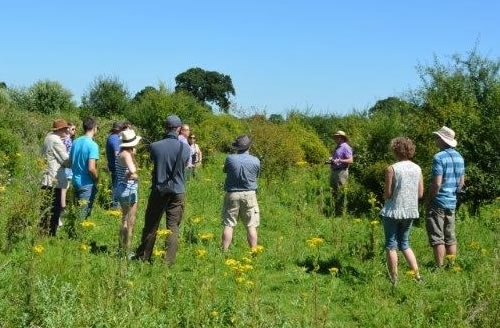
Up until about 15 years ago, the estate was run in your bog standard way – you know the sort of thing – Wheat, Oil seed rape and a Maize crop grown for the dairy herd. Then Sir Charles Burrell (very much “Charlie” to everyone!) decided that enough was enough and that he could not continue to run the estate as it was, with the stresses and strains of large overdrafts, resulting in poor returns.
Charlie took the radical step of pulling out all the internal fences and, over a period of a few years, turning most of the estate into the UK’s largest lowland rewilding project. Now, this does not mean pulling the plug on all management and allowing nature to take its course, well not entirely anyway.
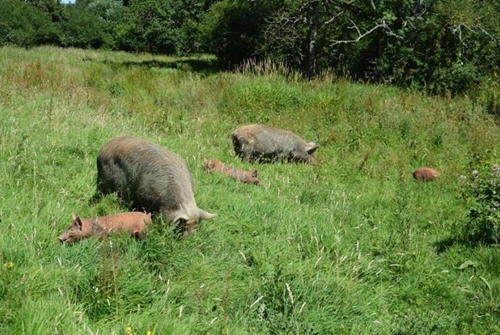
The project is interested in trying to “recreate” the wildwood of ancient Britain, but in today’s world. He has introduced Longhorn cattle, Tamworth pigs, Exmoor ponies, Red & Fallow deer which munch, browse, strip and root about in the growing vegetation. In effect, they represent the large prehistoric herbivores that would have existed way back in time, which created a mosaic of habitats from open pasture, through scrub, right up to closed canopy woodland – and everything in between!
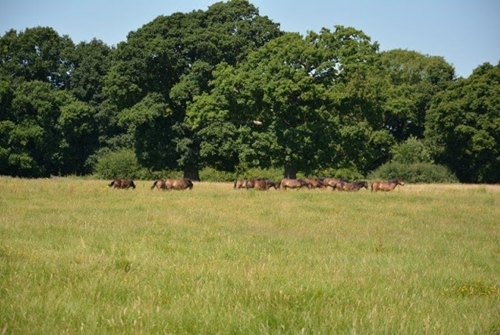
What is really interesting to me is that the estate’s finances now look in good order; but how can that be? Well, the pork, beef and venison which is raised in such an extensive and natural way from across the estate commands a decent premium. Many of the buildings that used to house stock, have since been converted into small business units, making a regular monthly income.
Another venture has brought the public onto the estate, who not only can go on “wildlife safaris” to see and learn about the wildlife and varied habitats, but also potentially to stay on site in a variety of luxurious bell tents and shepherd’s huts. Add to these estate businesses, the money from both the Common Agricultural Policy and Stewardship schemes and you begin to see how it all comes together.
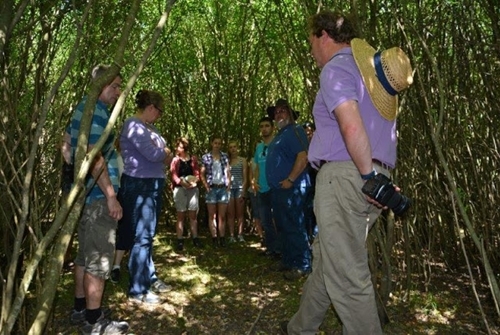
I found the mosaic of different habitats amazing. I expected to see a more uniform scrubby/woodland scene, but the animals are certainly having a major impact on the end result. You can see from the few photos that I have put up, everything from young, thick, shaded woodland to grass fields which look as though they are cut for hay each year!

Even arable plants survive. One might well think that this would be a group of plants that would suffer once the cultivators have been sold. But now the pigs do the “ploughing”, leaving churned up areas that quickly fill with a community of these plants such as Scarlet pimpernel and the rarer Sharped-leaved Fluellen.
We stopped at a good spot for viewing the wonderful Purple Emperor butterfly and almost immediately saw some flitting at speed around the tops of their favourite oak trees. The resurgence in young sallow – their caterpillar food plant – seems to be helping numbers increase. Penny Green, the estate ecologist, had found a young caterpillar which she followed through to the chrysalis stage and eventually, successfully hatching out into an adult. The photo of the empty pupal case is pictured below and it was great to think that we were probably watching the original occupant high up in the canopy!

Finally, we landed back at the Charlie’s wonderful home, where his wife Isabella had prepared us all a superb summer lunch. As you might well imagine, with a table surrounded by scientists, conservationists and land managers – the discussion was robust and wide ranging!!
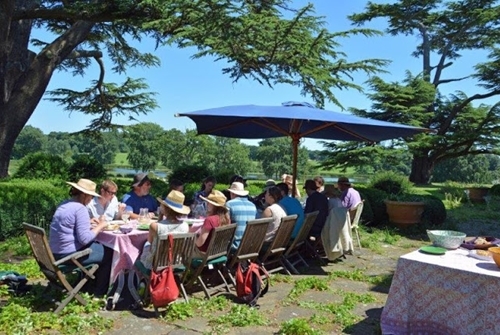
This is a fascinating project and I hope that it continues for many, many years to come as it is helping to reshape much of our thinking about the countryside and how it is managed. I would very much like to thank Charlie, Isabella and Penny for imparting their knowledge so freely, coupled with their infectious enthusiasm and wonderful hospitality.
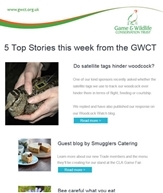 Free weekly newsletter
Free weekly newsletter
Stay updated and get all the latest GWCT blog updates and news delivered straight to your inbox each week.
Sign up FREE to the Weekly GWCT Newsletter >